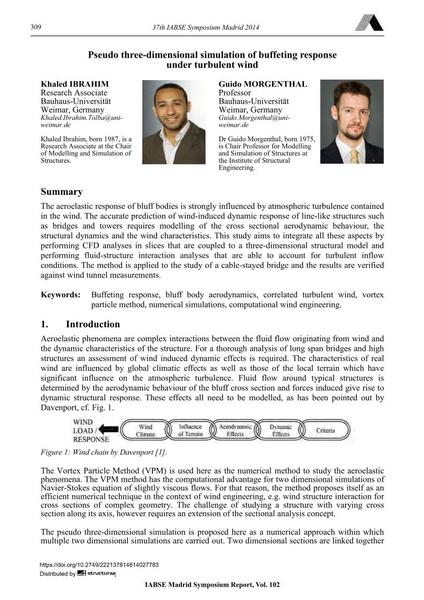Pseudo three-dimensional simulation of buffeting response under turbulent wind

|
|
|||||||||||
Bibliographic Details
| Author(s): |
Khaled Ibrahim
Guido Morgenthal |
||||
|---|---|---|---|---|---|
| Medium: | conference paper | ||||
| Language(s): | English | ||||
| Conference: | IABSE Symposium: Engineering for Progress, Nature and People, Madrid, Spain, 3-5 September 2014 | ||||
| Published in: | IABSE Symposium Madrid 2014 | ||||
|
|||||
| Page(s): | 309-316 | ||||
| Total no. of pages: | 8 | ||||
| Year: | 2014 | ||||
| DOI: | 10.2749/222137814814027783 | ||||
| Abstract: |
The aeroelastic response of bluff bodies is strongly influenced by atmospheric turbulence contained in the wind. The accurate prediction of wind-induced dynamic response of line-like structures such as bridges and towers requires modelling of the cross sectional aerodynamic behaviour, the structural dynamics and the wind characteristics. This study aims to integrate all these aspects by performing CFD analyses in slices that are coupled to a three-dimensional structural model and performing fluid-structure interaction analyses that are able to account for turbulent inflow conditions. The method is applied to the study of a cable-stayed bridge and the results are verified against wind tunnel measurements. |
||||
| Keywords: |
numerical simulations buffeting response bluff body aerodynamics correlated turbulent wind vortex particle method computational wind engineering
|
||||
